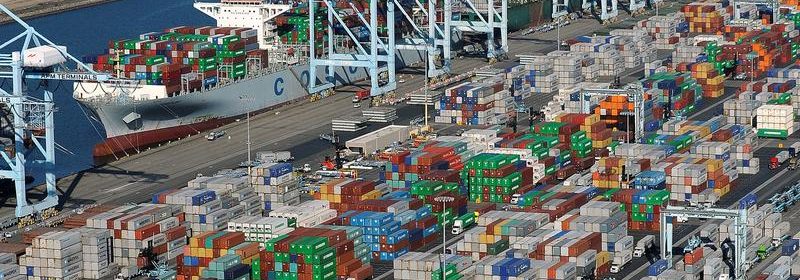U.S. business spending on equipment strong; goods trade deficit widens

WASHINGTON (Reuters) – New orders for U.S.-made capital goods increased more than expected in September and shipments surged, pointing to strong business spending on equipment, though stretched supply chains likely hampered overall economic growth in the third quarter.
Slower growth expectations were reinforced by other data from the Commerce Department on Wednesday showing the goods trade deficit widening sharply last month, with exports slumping. While wholesale inventories increased, stocks at retailers fell as supply at auto dealerships continued to decrease rapidly amid a global semiconductor shortage.
The reports were published ahead of the government’s snapshot of third-quarter gross domestic product on Thursday, expected to show the slowest growth pace since the second quarter of 2020, when the economy contracted sharply in the wake of stringent mandatory measures to contain the first wave of COVID-19 infections.
“The third quarter may be the weakest quarter for economic growth in over a year, but you would never know it looking at business capital spending setting records this month,” said Christopher Rupkey, chief economist at FWDBONDS in New York. “Business is looking past the slowdown in consumer spending in the third quarter and betting consumers will return to the shops and malls later this year and clear the shelves.”
Orders for non-defense capital goods excluding aircraft, a closely watched proxy for business spending plans, rose 0.8% last month. Data for August was revised lower to show these so-called core capital goods orders rising 0.5% instead of 0.6% as previously reported.
Economists polled by Reuters had forecast core capital goods orders gaining 0.5%. There were increases in orders for machinery, primary metals and fabricated metals products. But orders for electrical equipment, appliances and components fell as did those for computers and electronic products, likely because of a global chip shortage.
Shipments of core capital goods shot up 1.4% last month after rising 0.6% in August. Core capital goods shipments are used to calculate equipment spending in the GDP measurement.
Economists expect another quarter of strong business spending on equipment in the advance third-quarter GDP report on Thursday. But some are expecting even a decline because of an acute motor vehicle shortage, which has undercut automobile purchases.
U.S. stocks opened slightly higher, helped by a fresh batch of upbeat earnings reports. The dollar slipped against a basket of currencies. U.S. Treasury prices were higher.
SUPPLY BOTTLENECKS
The COVID-19 pandemic shifted demand towards goods as well as causing severe labor disruptions, resulting in unprecedented bottlenecks in the supply chain, which economists and businesses expect to persist through the first half of 2022.
Orders for durable goods, items ranging from toasters to aircraft that are meant to last three years or more, fell 0.4% after advancing 1.3% in August. They were weighed down by a 2.3% decline in orders for transportation equipment, which followed a 3.8% jump in August. That largely reflected motor vehicle shortages, which resulted in orders declining 2.9% after tumbling 3.9% in August.
Orders for civilian aircraft plunged 27.9% after soaring 63.9% in August. Boeing reported on its website that it had received 27 aircraft orders last month compared to 53 in August. Unfilled orders of durable goods rose 0.7% after advancing 0.9% in the prior month.
The flow of goods has also been disrupted. In another report on Wednesday, the Commerce Department said the goods trade deficit increased 9.2% to $96.3 billion in September. Goods exports dropped 4.7%, while imports gained 0.5%.
The report also showed wholesale inventories increased 1.1% last month. Retail inventories fell 0.2%, pulled down by a 2.4% plunge in stocks at auto dealerships. Retail inventories, excluding autos, which go into the calculation of GDP, rose 0.6%
According to a Reuters survey of economists, the economy likely grew at a 2.7% annualized rate in the third quarter. That would be a step-down from the 6.7% rate notched in the second quarter. Inventories were depleted in the first half of the year. Economists believe the pace of decline lessened in the third quarter, accounting for the bulk of expected GDP growth.
Trade has been a drag on GDP growth for a year, while inventories have subtracted from output for two straight quarters.
Source: Read Full Article
